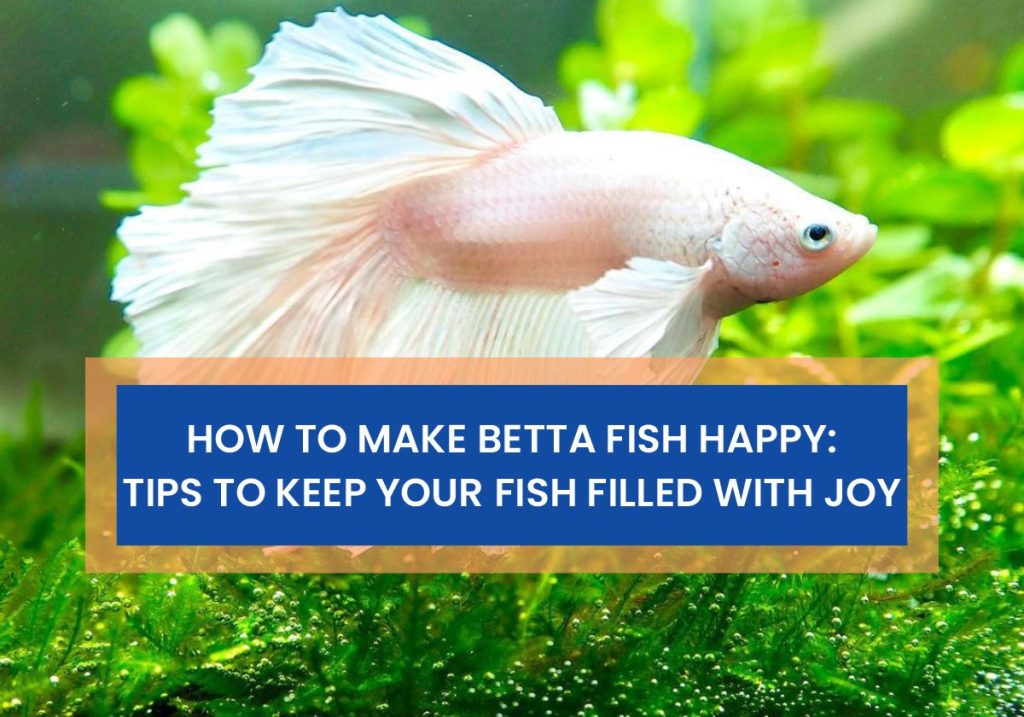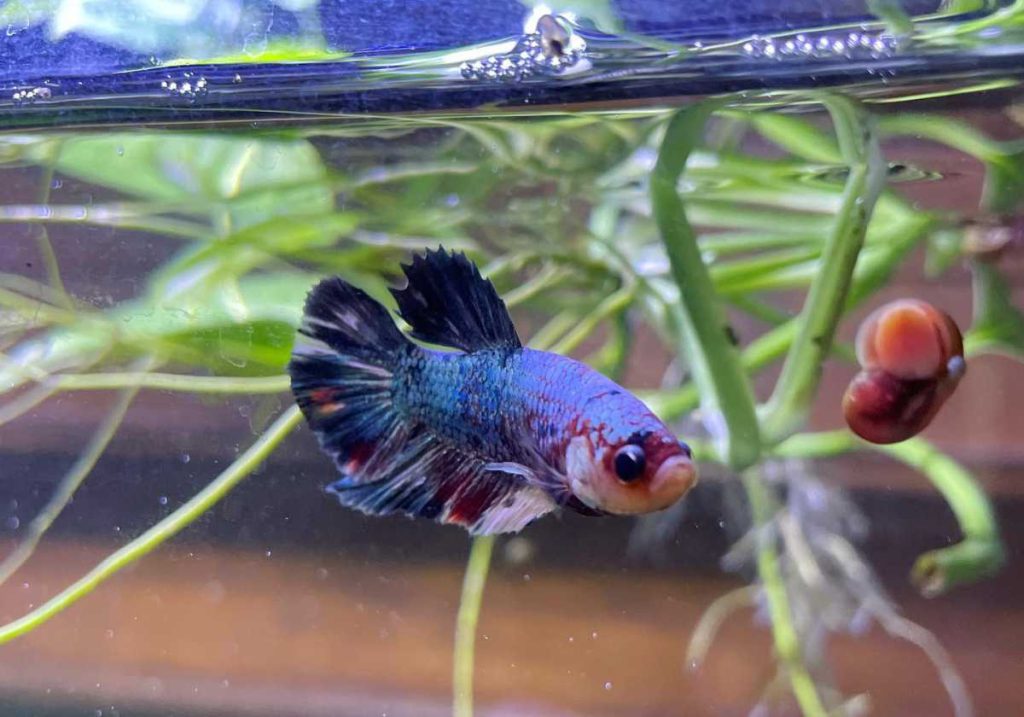As an Affiliate, We may earn a commission that doesn't cost you extra from qualifying purchases using links in this post. It helps keeps this blog running.
Ever heard the saying “Good things come to those who wait”? Well, when it comes to introducing your vibrant Betta fish to their new tank, that saying hits the bullseye! Picture this: you’ve just set up a fantastic new tank for your Betta buddy, and you’re all set to give them the grand tour. But hold on a sec, have you considered the magic of waiting 24 hours before actually moving them in?
Yep, you heard it right – there’s a method to the madness. In this dive into the underwater world of Betta fish care, we’re unraveling the mystery behind that 24-hour waiting period. Trust us, it’s a little extra time that can make a whole lot of difference for your finned friend’s comfort and health. So, let’s get our flippers wet and find out why patience truly pays off!
Why Wait 24 Hours Before Putting Betta Fish in a New Tank
Waiting for 24 hours before putting Betta fish in a new tank is important because it gives time for the betta tank environment to settle to ensure the nitrogen cycle is finished. When you set up a new tank, there can be things like chlorine and other chemicals in the water that are not good for fish. These things need time to evaporate or be removed.
Also, the water temperature in the tank can change quickly, which isn’t great for Betta fish. Waiting for 24 hrs lets the water get to the right temperature and stay steady. Lastly, a new tank can have helpful bacteria that help keep the water clean and safe for fish. Waiting helps these good bacteria grow before introducing the fish.
The Importance of Tank Preparation for Happy Betta Fish
It might be tempting to rush, but you really need to hold on a sec before you pop your betta fish into its new tank. Because trust me, taking the time to prep the tank can make a world of difference in your Betta’s health and happiness.
Imagine moving into a new house without any furniture or essentials – not so comfy, right? Well, Betta fish are a bit like that too. When you bring them home, their new tank is like their new home, and it needs a bit of a warm-up period. This waiting time helps in a few cool ways:
First, it lets the water temperature in the tank chill out and become stable. Betta fish don’t like sudden changes in temperature – it’s like a surprise cold shower for them. Waiting gives the water time to find its comfy temperature zone, so your Betta can swim around without shivering.
Second, tap water can have a sneaky ingredient: chlorine. It’s great for keeping our drinking water safe, but it’s like a bad guy for Betta fish. Waiting lets this chlorine do a disappearing act before your fish takes a dip.
Lastly, there’s something super important going on behind the scenes – a thing called “cycling the tank.” Think of it like a natural cleaning crew moving into the tank. Beneficial bacteria need time to set up shop and keep the water safe by munching away yucky stuff. This bacteria party takes a bit of time to get rocking, and your Betta’s 24-hour time-out lets it happen.
So, next time you’re eager to introduce your Betta to its new fish tank, just remember – the 24-hour waiting game isn’t just a random rule. It’s like giving your fish a smooth welcome into its new home, with comfy temperatures, chlorine-free water, and a bacterial cleanup crew that’s ready to roll. Your Betta will thank you for letting the tank chill before it takes the plunge!
Here’s What Really Happens To The Water Within That 24Hrs Wait
Of course, you have been wondering why does everyone keep saying you should wait for 24 hours before putting your fishy friend in there? I get it, waiting can be tough, especially when you’re eager to welcome your Betta fish to their new home. But guess what? That 24-hour wait time isn’t just a random number – it’s there for a reason.
Well, let’s dive into what exactly goes down with your tank water during that 24-hour waiting period. You might be surprised by what’s happening behind the scenes!
- Kickstarting the Tank Cycling: Setting the Scene
Alright, so imagine your new tank as a fresh canvas waiting to be painted with vibrant colors. But before you dive in, there’s a cool process called “cycling” that needs to happen. Think of it as getting backstage ready before the show. Cycling is basically letting your tank’s water mature to create a safe and comfy habitat for your Betta.
Now, here’s where the 24-hour wait comes into play. When you fill-up your tank with water and let it sit, it’s like you’re giving a shout-out to helpful and beneficial bacteria. You’re letting them get cozy and settle in because they’re like your tank’s own cleaning crew. These bacteria gobble up harmful stuff like ammonia and nitrites, which can make your fish feel like they’re swimming in a not-so-great neighborhood. By chomping down on these nasties, these bacteria keep the water quality top-notch.
During this 24hrs wait time, they start doing their thing – breaking down the ammonia and nitrites, and paving the way for a safe environment.
Remember, it’s a bit like prepping the stage before the big concert. You wouldn’t want the band to play without checking their instruments, right? Similarly, you wouldn’t want your Betta to dive into a tank that’s not ready.
So, that 24-hour wait isn’t just twiddling your thumbs – it’s giving your tank’s water a chance to transform into a healthy and cozy space for your Betta fish.
- Water Temperature Stabilization
Picture this: Betta fish are like the Goldilocks of the aquatic world. They want their water temperature to be just right. Too hot or too cold can stress them out big time, and stressed fish aren’t happy campers. Just like you wouldn’t jump into a freezing or scalding shower, Betta fish need their environment to be cozy.
So, why the 24-hour wait? Well, it’s all about letting the tank find its zen. When you set up a new tank, the water temperature can be a bit wonky at first. It might not be exactly where it should be or where you want it to be for your Betta’s comfort. But fear not! Waiting for those 24 hours gives the tank time to settle down and get the temperature just right.
- Chlorine Evaporation: A Key Player in Water Prep
Picture this: you turn on your tap, fill up a bucket of water, and get ready to pour it into your Betta fish’s new tank. But here’s the catch – tap water often contains chlorine. Yeah, the same stuff they use to disinfect swimming pools. While it’s great for keeping pools clean, it’s not so great for your fishy friends.
Chlorine might not be too friendly to our finned companions. It can irritate their delicate gills and skin, causing stress and potentially leading to health issues. Not the welcome party you’d want for your Betta, right?
Now, here’s where the waiting game comes into play. When you let your tap water sit out for about 24 hours, something pretty cool happens – chlorine starts to evaporate. Yep, it’s like your water is having a spa day, letting go of that chlorine smell that your fish wouldn’t appreciate.
By the time those 24 hours are up, a lot of that pesky chlorine will have made its grand exit, leaving you with water that’s way friendlier for your Betta. It’s like giving your fish a first-class ticket to a cleaner, safer swimming experience.
- Stress Reduction
Imagine you’re on a long journey, from one place to another. You’re in a new environment, surrounded by unfamiliar sights and sounds. Stressful, right? Well, that’s what Betta fish go through when they’re transported to your home and introduced to a new tank.
During transportation and acclimation, Betta fish experience stress. It’s like moving to a new house for them, and they can’t exactly pack their bags. This stress can weaken their immune system and make them more susceptible to illnesses. Not ideal for your new finned friend, right?
Now, here’s where that 24-hour wait becomes a superhero. By letting the water sit in the tank for this time, you’re allowing it to settle down. The water gets comfortable in its new home – it stabilizes in temperature and gets rid of harmful stuff like chlorine. Just like how you’d unpack and organize after moving, the water gets a chance to settle in and get cozy.
Think about it this way: If you were welcomed into a calm, organized space after a stressful journey, wouldn’t you feel a lot better? Well, the same goes for Betta fish. When you introduce them to a tank that’s already feeling like home, they’re more likely to relax and acclimate quicker.
By giving the water that 24-hour head start, you’re setting the stage for a smoother transition for your Betta fish. Less stress means a happier, healthier fishy friend. So, while it might be tempting to rush things, remember that good things come to those who wait – and in this case, waiting is all about making your Betta’s life better.
Monitoring Equipment and Conditions During the 24hrs Wait for a Happy Betta Fish
Let’s take a quick pit stop to talk about something crucial: monitoring equipment and water conditions during the 24hrs wait. Think of it as giving your Betta fish a VIP welcome by ensuring their new home is comfy and cozy.
14 Checklist of Parameters to Monitor During the Wait:
During the 24-hour waiting period, it’s like you’re playing the role of a fish detective. Don’t worry, it’s not as serious as it sounds! Here’s a handy checklist of things to keep an eye on:
- Temperature Sweet Spot: Betta fish are quite picky about their surroundings, and they’re not fans of sudden temperature surprises. Make sure the water temperature is just right, ideally around 78-80°F (25-27°C). A consistent thermometer reading will give you a thumbs-up.
- pH Balance: Betta fish prefer slightly acidic to neutral water. Aim for a pH level between 6.5 and 7.5. You can easily find pH testing kits at your local pet store or online.
- Ammonia Alert: Ammonia buildup can spell trouble for your fish. Test the water for ammonia levels, aiming for a reading of zero. If there’s a spike, you might need to give the tank a bit more time to cycle.
- Nitrite No-No: Similar to ammonia, nitrite is another sneaky chemical that can harm your fish. Test for nitrite levels and keep them as close to zero as possible.
- Nitrate Notion: Nitrate is like the less harmful cousin of ammonia and nitrite. It’s still important to keep an eye on it, though. Aim for nitrate levels below 20 ppm (parts per million).
- Water Hardness: Betta fish come from areas with relatively soft water. Test the water hardness (GH) and keep it in the range of 4-8 dGH.
- Chlorine Check: Even if you’ve let the water sit, it’s a smart move to double-check for any lingering chlorine. Chlorine-removing drops can save the day.
- Aquarium Filter: Your fish buddy will appreciate a clean environment. Check that the aquarium filter is running smoothly and doing its job of keeping the water clear.
- Decor and Hideouts: While not exactly a parameter, it’s a good time to ensure there are enough hiding spots and decorations in the tank. These will help your Betta feel safe and at home.
- Clean Water, Please! Betta fish aren’t fans of dirty water any more than you’d enjoy living in a smelly room. Before your fish moves in, make sure the water is clean and free from harmful chemicals. Use a water conditioner to remove any chlorine that might be lurking.
- Hidey-Holes and Hangouts: Betta fish like their privacy. Adding some plants, decorations, or little caves to the tank will give your fishy friend places to explore and hide when they need some “me-time.”
- No Bullies Allowed: Bettas can be a tad territorial. If you’re planning a community tank, choose tankmates that won’t pick on your Betta or nip their fins. Peaceful fish like Corydoras or snails can make great pals.
- Filtration Fun: A good filter keeps the water clean and helps the beneficial bacteria grow. These bacteria are like the cleaning crew that keeps your tank’s ecosystem in balance.
- Lighting Love: Like plants, Betta fish appreciate a good amount of light, but not too much. Make sure they have some shade in the tank to relax in when it’s a bit too bright.
Remember, this checklist is like a mini adventure in responsible fish care. Don your detective hat, grab those testing kits, and make sure everything’s in tip-top shape. Your Betta fish will thank you with happy fins and dazzling colors once they dive into their new abode!
In a Nutshell:
Tank preparation isn’t just about arranging pretty rocks – it’s about setting up a cozy, clean, and safe home where your Betta can thrive. Taking the time to get things just right will help reduce stress and keep your fishy friend healthy. So, before you welcome your Betta to their new pad, give their tank some tender loving care. Your Betta will thank you with their vibrant colors and playful personality!

I’m Akin Bouchard. Even though I now own several different fish species, I first became a koi pond owner because I loved these creatures and wanted to turn my passion into something more serious. I take pride in my collection of koi fish and love sharing my knowledge with others interested in these beautiful creatures.
A Comprehensive Guide to Training Your Fish to Perform Amazing Tricks Feats




